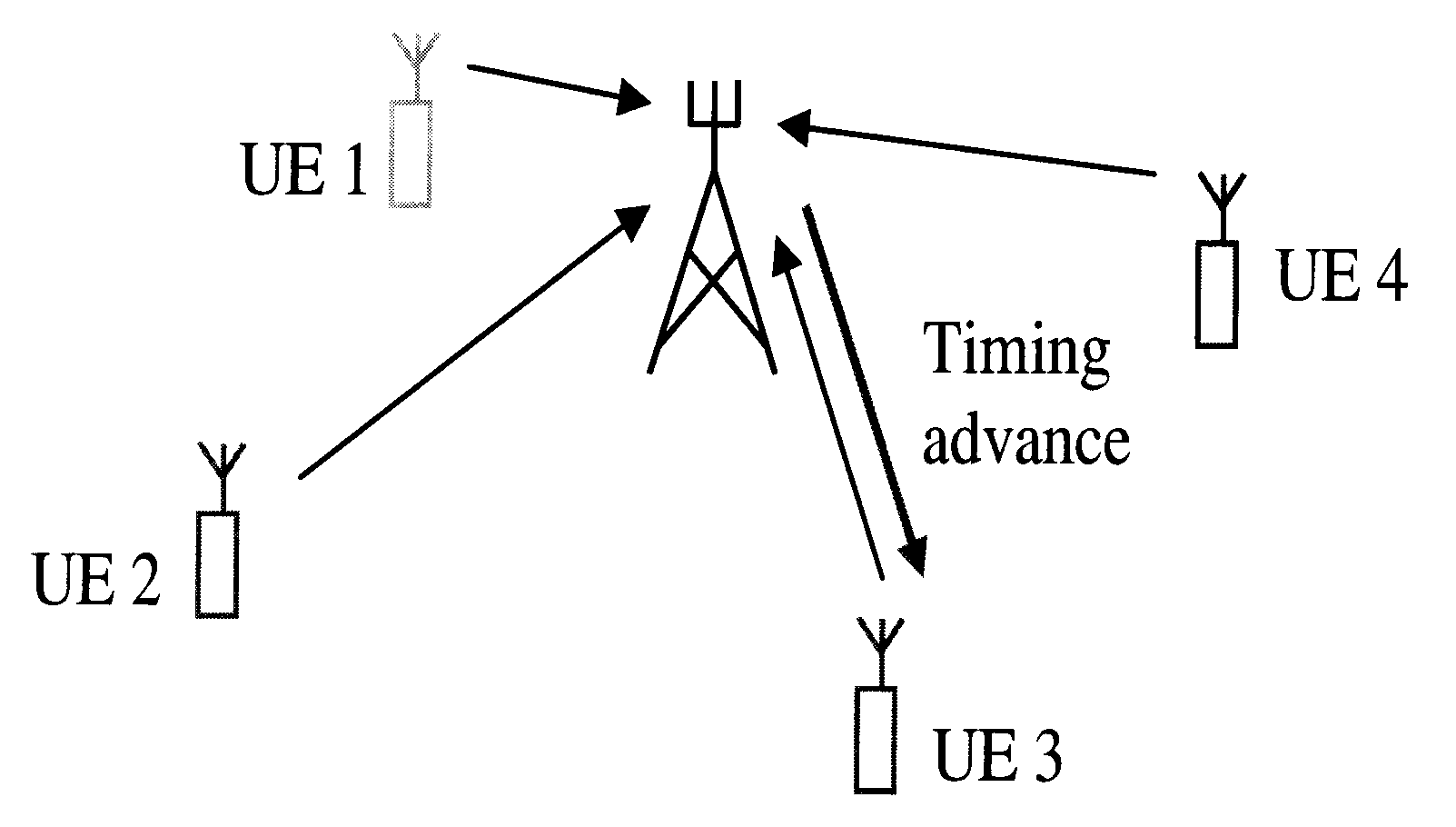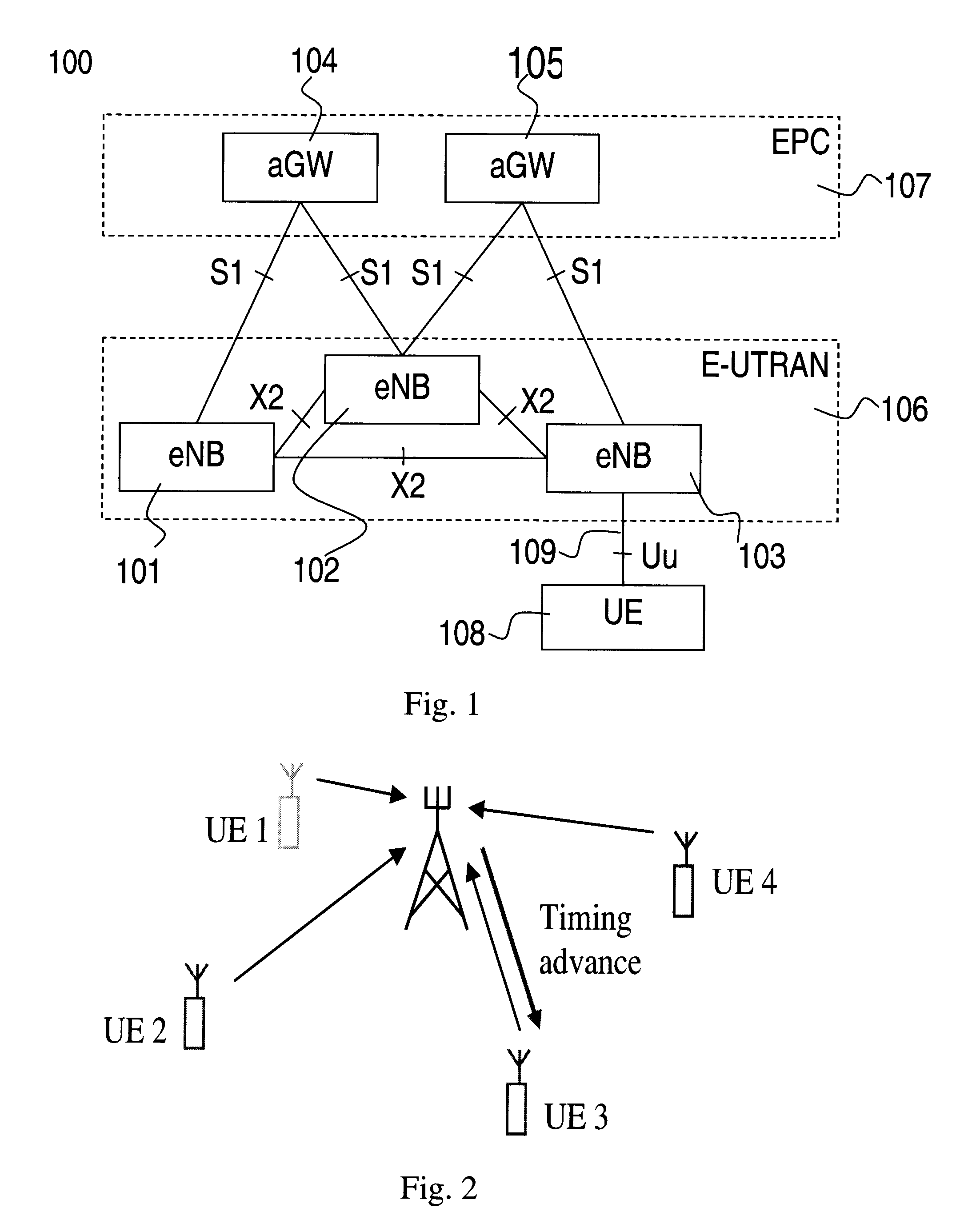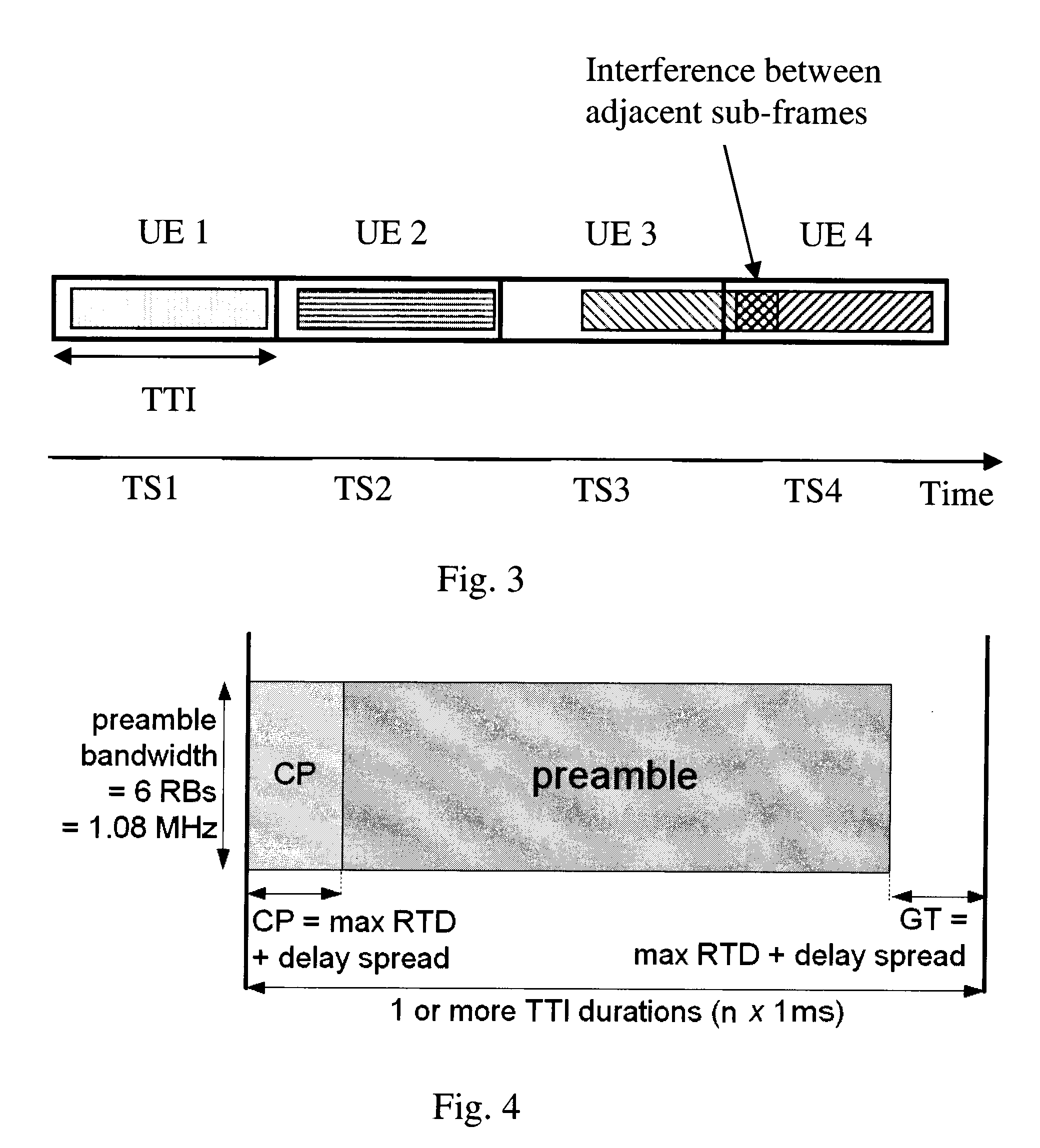System and method for determining a transmit timing for communication in a radio communication system
a radio communication system and transmit timing technology, applied in the direction of transmission, synchronisation arrangement, wireless communication, etc., can solve the problems of inability to handle a relatively low load, lose uplink synchronization, and often have disadvantages, so as to achieve the effect of substantially reducing the signaling regarding synchronization procedures
- Summary
- Abstract
- Description
- Claims
- Application Information
AI Technical Summary
Benefits of technology
Problems solved by technology
Method used
Image
Examples
Embodiment Construction
[0023]An embodiment of the present disclosure will now be described with reference to the 3rd Generation Partnership Program (3GPP) work on defining a future cellular communication system, which presently is called the Evolved Universal Terrestrial Radio Access (E-UTRA) or Long Term Evolution (LTE).
[0024]An example of the architecture of an E-UTRA system 100 is shown in FIG. 1, and consists of two kinds of nodes, radio base stations (stationary radio transceivers), eNBs (enhanced Node B) 101-103 and aGWs (access GateWay) 104-105, where the eNBs 101-103 belongs to the evolved UTRAN (E-UTRAN) 106 and the aGW belongs to the evolved packet core (EPC) 107. A user entity (UE) 108 connects to the network (E-UTRAN and EPC) by means of a radio interface, Uu interface 109. The eNB 101-103 handles communication over the radio interface in a certain coverage area, i.e., cell, which is the area wherein the radio signal is strong enough to allow a satisfactory communication with UEs within said a...
PUM
 Login to View More
Login to View More Abstract
Description
Claims
Application Information
 Login to View More
Login to View More - R&D
- Intellectual Property
- Life Sciences
- Materials
- Tech Scout
- Unparalleled Data Quality
- Higher Quality Content
- 60% Fewer Hallucinations
Browse by: Latest US Patents, China's latest patents, Technical Efficacy Thesaurus, Application Domain, Technology Topic, Popular Technical Reports.
© 2025 PatSnap. All rights reserved.Legal|Privacy policy|Modern Slavery Act Transparency Statement|Sitemap|About US| Contact US: help@patsnap.com



